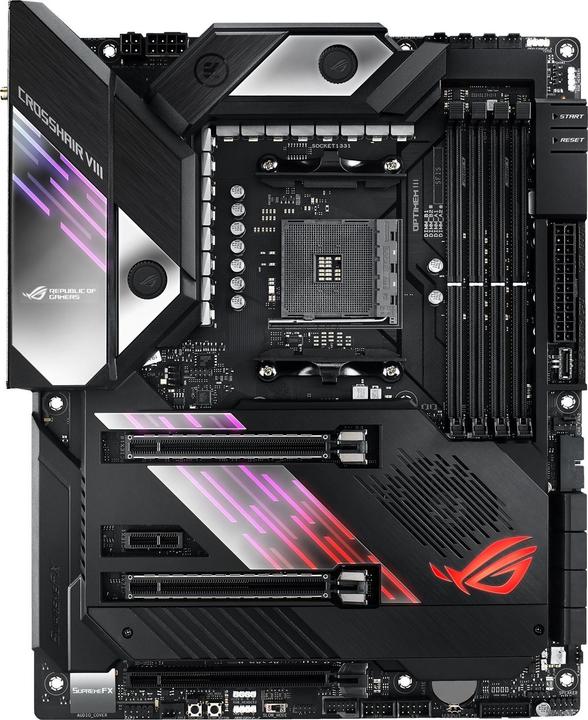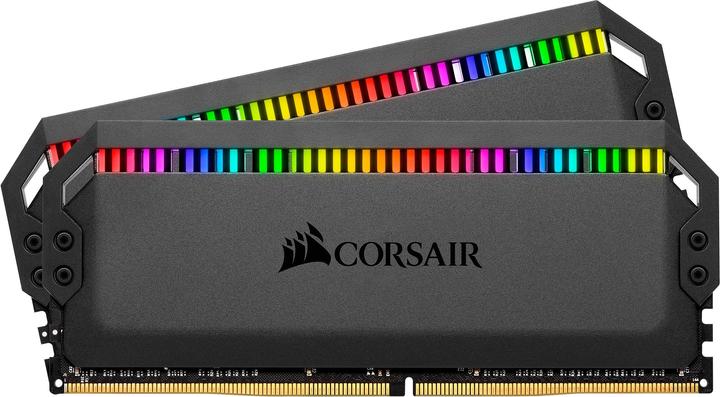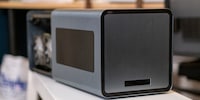
Fractal Define 7: A new edition of the tried and tested
Fractal's Define case enters its seventh round. The case with its timeless look - evil tongues would call it boring - has been improved in key areas and now looks even sleeker.
A black box. That's what the Define 7 looks like at first glance. I like it without frills and when it comes to PC cases, it's the inner values that count anyway.

The most important things at a glance:
- Modular housing for memory à gogo or water cooling freaks
- Front ports: two USB-A 3.0, two USB-A 2.0, one USB-C 3.1 Gen2, audio and microphone
- Space for up to 14 hard drives and four SSDs
- Space for up to nine 140-millimetre fans and nine 120-millimetre fans
- Radiators up to 420 millimetres
- Form factor: ATX, mATX, Mini ITX and E-ATX
Modular to the max
The Define 7 offers seven front ports: Two USB 3.0 type A, two USB 2.0 type A, one USB 3.1 type C and one audio and microphone port each. The power and reset button are located between these ports.
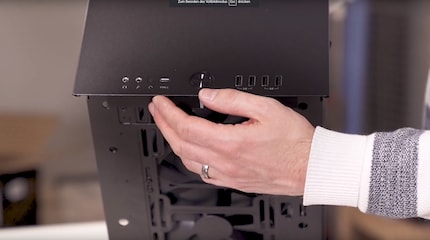
Like its predecessor, the Define R6, the Define 7 is modular. The case is suitable as a server as well as a gaming machine. The Define 7 has an open layout as standard. To convert it to the storage layout for servers, the rear panel next to the mainboard is moved to the front and mutates into a case bay. Additional drives can be mounted behind it.
The housing has space for up to 14 hard drives and four SSDs. Fractal even has a heart for fans of optical drives: a 5.25-inch drive can be mounted at the top behind the front panel. Two 2.5-inch drives are mounted on the rear panel on the right. For 2.5 or 3.5 inch drives, there is a drive cage under the power supply cover. This provides space for two drives and can be moved underneath the power supply cover. Alternatively, the drives can also be attached to a multibracket. A pump can also be screwed onto this.
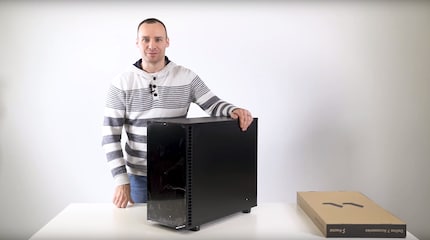
The scope of delivery includes six brackets for 3.5-inch and 2.5-inch drives, two brackets for 2.5-inch drives and a multibracket. If you need more, you will need to buy them separately.
A maximum of nine 140-millimetre or nine 120-millimetre fans can be fitted in the standard layout. In the storage layout, there are seven 140-millimetre and eight 120-millimetre fans. For the radiators, there is a maximum of one 420-millimetre (in the standard layout) or one 240-millimetre radiator (in the storage layout) at the top. The front is 360 millimetres in the standard layout and 240 millimetres in the storage layout. A maximum of a 140 millimetre radiator fits at the bottom in both layouts. If you cool the CPU with air, the radiator can be a maximum of 185 millimetres high.
The available form factors are ATX, mATX, Mini ITX and E-ATX. E-ATX mainboards can be a maximum of 285 millimetres wide. The case measures 546.8×240×474.2 millimetres. This makes it slightly larger all round than its predecessor.
Everything where it belongs
Fractal has made access to the components easier with the new case: instead of using screws, the side panels are clipped in. This works great and the panels also hold when I shake the case properly.
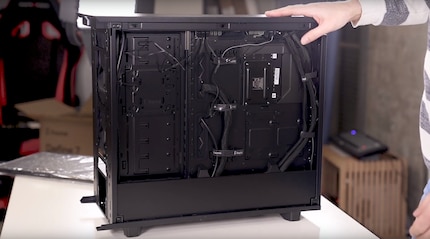
The top panel can also be clicked in and out. This ensures quick access to the filter. The bracket for radiators is located underneath. A top panel with sound insulation is fitted as standard. Fractal supplies a top panel with ventilation slots for optimised airflow. With the predecessor Define R6, you don't have to replace the entire top panel to switch from the top panel with sound insulation to the top panel with ventilation slots. This is done via a click-in mechanism that is integrated into the top panel. The variant on the Define 7 looks cleaner and replacing the top takes about the same amount of time.
The front flap, which can be opened for better airflow, is also only clicked into place. This ensures access from the front.
A fan controller is included in the scope of delivery. This offers space for six 3-pin fans and three 4-pin PWM fans. Fractal has revised the positioning. The controller is now located below the top panel. This means it takes up very little space and there is enough room for cable management at the rear. In the predecessor, the controller was placed more or less in the centre of the rear of the case.
Fractal offers various guides for the cables. This is what bothered me about the previous Fractal cases: there was always no way to manage cables properly. Now this is finally possible and with the ingeniously placed housing feed-throughs for the cables, each one goes where it should. It is a little less great that there is still a little less space available for the cables at the back of the case. At least there is now a cover that hides the cables in the lower area of the rear of the housing.
All in all, it's fun to build in the Define 7. Everything fits and the workmanship is Fractal-typical top.
Test methodology
The most important thing about a case is the airflow. In other words: How efficiently is fresh, cool air transported into the case and out again? To test this, I subject the following components installed in the case to the HeavyLoad (for the CPU) and FurMark (for the GPU) stress tests:
I use the AMD Wraith Prism as the CPU cooler.
I run the stress tests for 20 minutes. I measure the temperature with three thermometers at different points: One thermometer measures the ambient temperature. For better comparability, I do the tests in our studio in the basement. The temperature there averages 20° Celsius throughout the year. I place another thermometer in the centre of the case in front of the graphics card. I attach the last thermometer with adhesive tape behind the fan at the end of the case. I use three case fans: two at the front and one at the back. I set them to 100 per cent power in the BIOS.
I run the tests eight times. Four times each with the supplied Dynamic X2 GP-14 fans from Fractal Design and four times with Noctua NF-A14 PWM Chromax. I use the Noctua fans so that I can compare the results with other cases. I carry out the first test with a sound-insulated top panel and the second with a ventilation slot top panel. I then carry out both tests again with the front flap open.
After five, ten, 15 and 20 minutes, I note the temperature of the thermometers, CPU, GPU, RAM and VRAM. After each test, I switch off the system and let it cool down.
Prima Airflow
How the Define 7 performs in the tests:
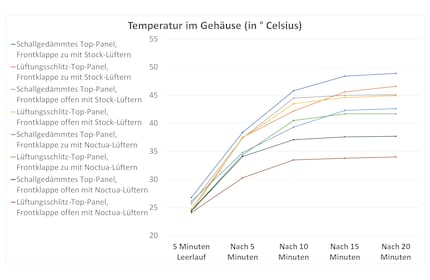
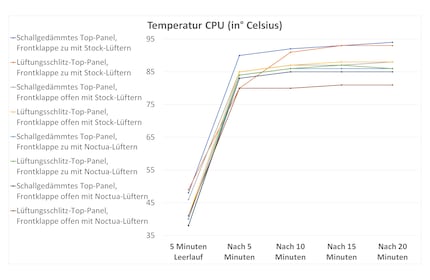
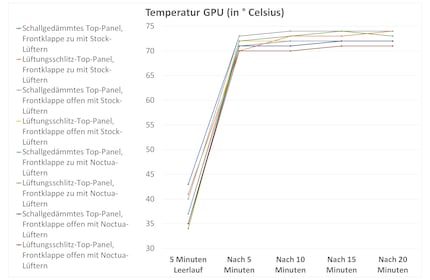
Here are all the results in tabular form:
| Temperatures | Sound-insulated top panel, front flap closed with stock fans | Ventilation slot top panel, front flap closed with stock fans | Sound-insulated top panel, front flap open with stock fans | Ventilation slot top panel, front flap open with stock fans | Sound-insulated top panel, front flap closed with Noctua fans | Ventilation slot top panel, front flap closed with Noctua fans | Sound-insulated top panel, front flap open with Noctua fans | Ventilation slot top panel, front flap open with Noctua fans |
|---|---|---|---|---|---|---|---|---|
| Temperature environment | 19.4° Celsius | 19.3° Celsius | 19.3° Celsius | 19.4° Celsius | 19.4° Celsius | 19.5° Celsius | 19.6° Celsius | 19.5° Celsius |
| Temperature in the housing
after five minutes in idle mode / after five minutes / after ten minutes / after 15 / after 20 minutes | 26.8° Celsius / 38.4° Celsius / 45.8° Celsius / 48.4° Celsius / 48.9° Celsius | 24.4° Celsius / 37.5° Celsius / 42.2° Celsius / 45.6° Celsius / 46.6 | 25.7° Celsius / 37.4° Celsius / 44.5° Celsius / 45° Celsius / 45.1° Celsius | 24.8° Celsius / 37.4° Celsius / 43.5° Celsius / 44.6° Celsius / 44.9° Celsius | 26.1° Celsius / 34.8° Celsius / 39.3° Celsius / 42.3° Celsius / 42.6° Celsius | 24.5° Celsius / 34.4° Celsius / 40.5° Celsius / 41.7° Celsius / 41.7° Celsius | 24.4° Celsius / 34.1° Celsius / 37.1° Celsius / 37.6° Celsius / 37.7° Celsius | 24.1° Celsius / 30.3° Celsius / 33.5° Celsius / 33.8° Celsius / 34° Celsius |
| Temperature behind housing
after five minutes in idle mode / after five minutes / after ten minutes / after 15 / after 20 minutes | 25.1°Celsius / 30.4° Celsius / 33.8° Celsius / 35.7° Celsius / 36.1° Celsius | 24.3° Celsius / 28.2° Celsius / 31.2° Celsius / 33.6° Celsius / 34.6° Celsius | 24.8° Celsius / 27.4° Celsius / 31.4° Celsius / 32.1° Celsius / 32.9° Celsius | 23.5° Celsius / 26.9° Celsius / 29.8° Celsius / 31.5° Celsius | 24.8° Celsius / 28.9° Celsius / 30.8° Celsius / 32.2° Celsius / 32.4° Celsius | 23.8° Celsius / 27° Celsius / 30.4° Celsius / 31.5° Celsius / 31.6° Celsius | 23.5° Celsius / 27.1° Celsius / 29.2° Celsius / 30° Celsius / 30.1° Celsius | 23.2° Celsius / 27.4° Celsius / 29.1° Celsius / 29.6° Celsius / 29.8° Celsius |
| CPU temperature
after five minutes in idle mode / after five minutes / after ten minutes / after 15 / after 20 minutes | 48° Celsius / 90° Celsius / 92° Celsius / 93° Celsius / 94° Celsius | 49° Celsius / 80° Celsius / 91° Celsius / 93° Celsius / 93° Celsius | 46° Celsius / 85° Celsius / 87° Celsius / 87° Celsius / 88° Celsius | 41° Celsius / 85° Celsius / 87° Celsius / 88° Celsius / 88° Celsius | 40° Celsius / 84° Celsius / 86° Celsius / 86° Celsius / 86° Celsius | 38° Celsius / 84° Celsius / 86° Celsius / 87° Celsius / 86° Celsius | 38° Celsius / 83° Celsius / 85° Celsius / 85° Celsius / 85° Celsius | 41° Celsius / 80° Celsius / 80° Celsius / 81° Celsius / 81° Celsius |
| Temperature GPU
after five minutes in idle mode / after five minutes / after ten minutes / after 15 / after 20 minutes | 43° Celsius / 73° Celsius / 74° Celsius / 74° Celsius / 74° Celsius | 41° Celsius / 70° Celsius / 73° Celsius / 73° Celsius / 74° Celsius | 40° Celsius / 73° Celsius / 74° Celsius / 74° Celsius / 74° Celsius | 37° Celsius / 72° Celsius / 72° Celsius / 72° Celsius / 72° Celsius | 37° Celsius / 71° Celsius / 72° Celsius / 72° Celsius / 72° Celsius | 34° Celsius / 72° Celsius / 73° Celsius / 74° Celsius / 73° Celsius | 35° Celsius / 71° Celsius / 71° Celsius / 72° Celsius / 72° Celsius | 35° Celsius / 70° Celsius / 70° Celsius / 71° Celsius / 71° Celsius |
| RAM temperature
after five minutes in idle mode / after five minutes / after ten minutes / after 15 / after 20 minutes | - / 80° Celsius / 82° Celsius /82° Celsius / 84° Celsius | - / 75° Celsius / 80° Celsius / 82° Celsius / 82° Celsius | - / 80° Celsius / 82° Celsius / 82° Celsius / 82° Celsius | - / 78° Celsius / 80° Celsius / 80° Celsius / 80° Celsius | - / 76° Celsius / 78° Celsius / 78° Celsius / 78° Celsius | - / 78° Celsius / 80° Celsius / 80° Celsius / 80° Celsius | - / 78° Celsius / 80° Celsius / 80° Celsius / 80° Celsius | - / 76° Celsius / 78° Celsius / 78° Celsius / 78° Celsius |
| Temperature VRAM
after five minutes in idle mode / after five minutes / after ten minutes / after 15 / after 20 minutes | - / 70° Celsius / 72° Celsius / 73° Celsius / 73° Celsius | - / 68° Celsius / 70° Celsius / 72° Celsius / 73° Celsius | - / 68° Celsius / 71° Celsius / 72° Celsius / 72° Celsius | - / 67° Celsius / 70° Celsius / 70° Celsius / 70° Celsius | - / 65° Celsius / 68° Celsius / 69° Celsius / 69° Celsius | - / 66° Celsius / 69° Celsius / 70° Celsius / 70° Celsius | - / 65° Celsius / 68° Celsius / 68° Celsius / 68° Celsius | - / 64° Celsius / 66° Celsius / 66° Celsius / 67° Celsius |
The results are as I expected. The more inlet and outlet openings the housing has, the better fresh air is transported in and out. The temperatures are always lower with the Noctua fans. In the case, the temperature difference between the worst configuration (sound-insulated top panel, front flap closed with stock fans) and the best configuration (ventilation slot top panel, front flap open with Noctua fans) is 14.9° Celsius. The difference in noise emission is 5 dB. 46 dB with the configuration "Sound-insulated top panel, front flap closed with stock fans" and 51 dB with the configuration "Ventilation slot top panel, front flap open with Noctua fans".
The differences are also enormous for the CPU. 13° Celsius for the CPU temperature is worlds apart. The Noctua fans consistently perform better than the stock fans. The configuration does not have such a big influence on the GPU. The difference is only 3° Celsius between the best and worst configuration. For RAM and VRAM, the difference is 6° Celsius.
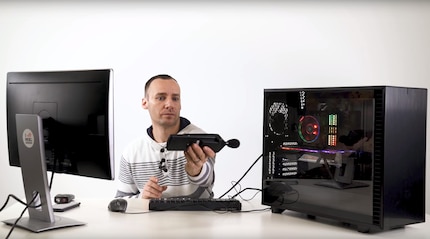
How the Define 7 compares to the Fractal Vector RS. You'll be reading this review in the next few days. For a better comparison, I will use the results of the most closed configuration and the most open configuration in the case with Nocuta fans.
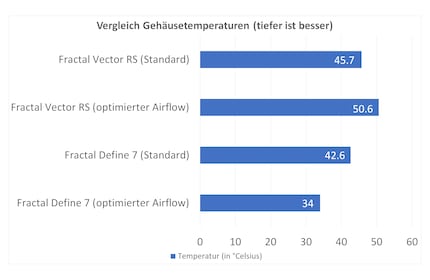
Tried and tested reissued
Fractal Design has improved its predecessor in key areas with the Define 7. The cable guides are top-notch, as is the workmanship in general. Those who like simple cases will love the Define 7
In addition, the case is modular. Within seconds, you can convert it from a completely closed, low-noise case to an airflow specialist. When all the hatches are open, a relatively cool wind blows through the housing.
With all praise: Fractal hasn't changed much with the Define 7. The problem of a little less space on the back of the case remains. I like Fractal cases, but sometimes a little more courage in the design would be desirable.
If I were to build a new PC now, I would definitely put the Define 7 on my shortlist.
From big data to big brother, Cyborgs to Sci-Fi. All aspects of technology and society fascinate me.
